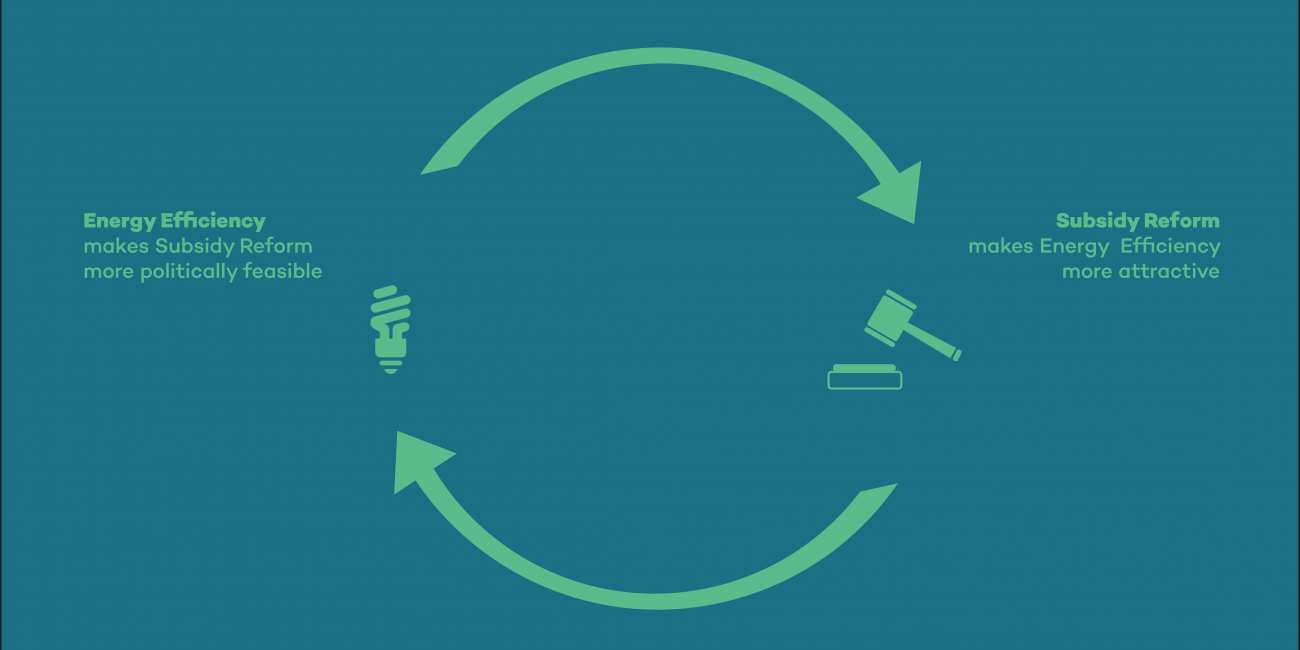Energy Efficiency and Subsidy Reform: A virtuous circle

Energy challenges are similar across the world. Fortunately, so are the solutions. In many cases, subsidy reform and energy efficiency are closely linked and mutually supportive.
I had a chance to reflect on this recently when 120 delegates from 40 countries came together in Paris with the aim of improving energy efficiency. I was honoured to present during this one-week training course, which has been a platform for sharing global experiences for the last 11 years.
Introducing the week’s program, Brian Motherway of the International Energy Agency highlighted the huge impact energy-efficiency opportunities could have. He discussed the Efficient World Scenario, which shows that, if all economically feasible energy-efficiency options were taken up by 2040, global greenhouse gas emissions from energy could be held close to current levels, despite a projected doubling of world economic activity (GDP).
Motherway posed this key question to the participants: how can we usher in energy efficiency more quickly? During Day 1 of the workshop, we explored cross-cutting answers, including energy subsidy reform. In my own presentation, I explained how subsidy reform supports energy efficiency, and energy efficiency supports subsidy reform. They are indeed a virtuous circle.
We’ve long known working on both the technical side (energy efficiency) and fiscal side (subsidy reform) simultaneously is necessary for efficient energy systems. So how can we better link energy efficiency and subsidy reform? Clean energy subsidy swaps—taking some of the savings from subsidy reform and investing it into energy efficiency or renewable energy—is a highly promising mechanism to achieve this.
There are examples of swaps at both the macro and micro levels. In 2015, the Indonesian economy benefited from redirecting government expenditure on gasoline and diesel subsidies into infrastructure, health, education and regional development. At the moment, IISD is working in Zambia with their Ministry of Energy and CUTS Lusaka on moving diesel subsidies into solar power and moving electricity subsidies to mining into energy efficiency at mines.
Swaps can contribute to another of Motherway’s key challenges: how to quadruple investment in energy efficiency over the next 20 years. Subsidy reform on its own reduces energy consumption and associated emissions because price increases encourage more energy-efficient purchases and behaviour. But swaps give a second boost by providing some much-needed clean energy investment: IISD’s work has that shown reductions in greenhouse gases at the national level moved from 11 to 18 per cent if roughly a third of savings from subsidy reform went into clean energy (energy efficiency and renewable energy).
Energy efficiency and subsidy reform are a virtuous circle, and the gains can be realized through swaps. Ending my presentation, I expressed my wish that we will observe more examples of successful clean energy swaps. The delegates were strongly encouraged to investigate the opportunities their annual budget cycles and other plans offer to implement swaps.

For a more detailed discussion of this opportunity, listen to the International Energy Agency webinar recording on subsidy reform in the context of energy efficiency.
